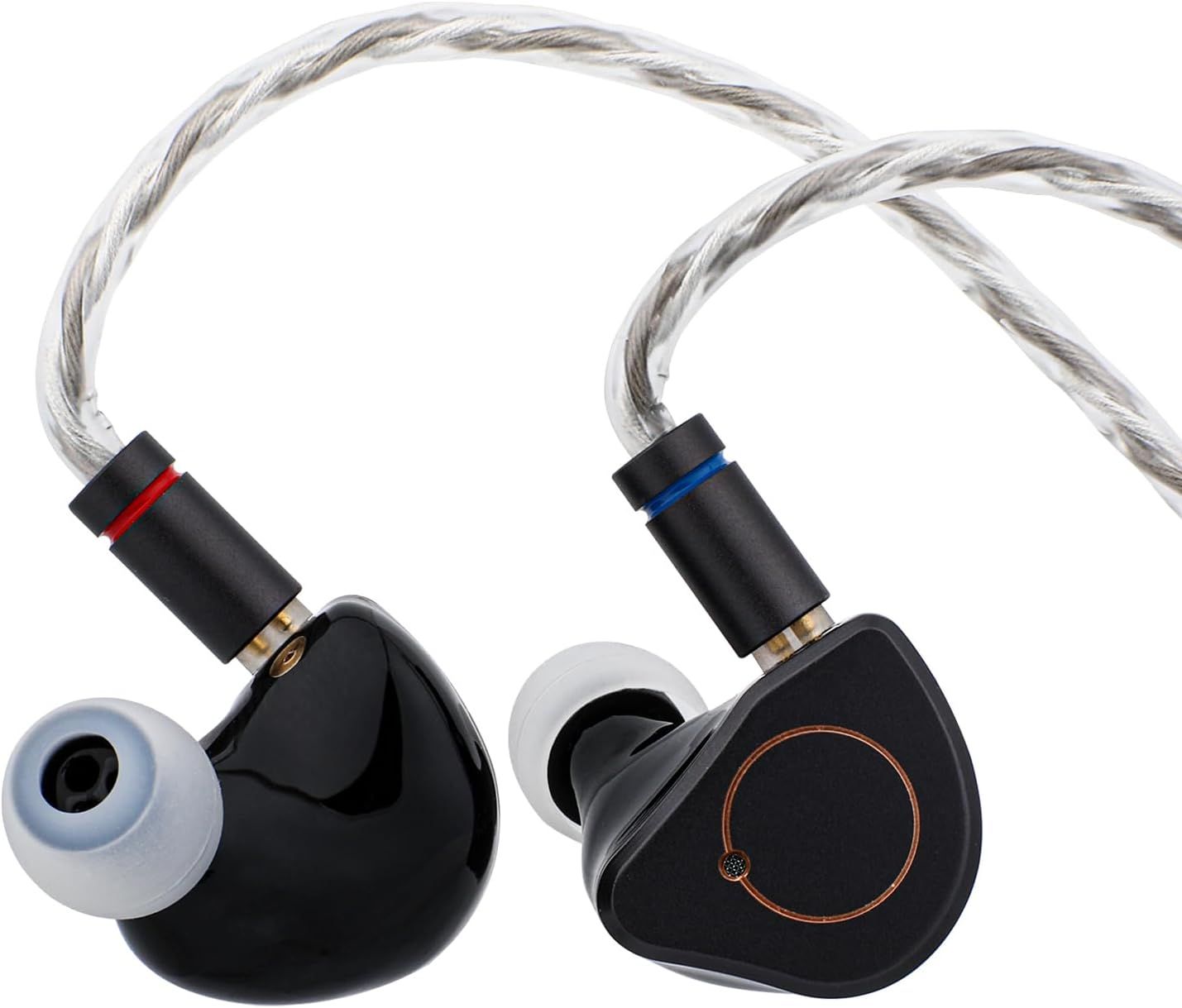Cantorvs.SuperMix 4
Sound & Specs Comparison
Information
Both IEMs are widely regarded in the audiophile community. See how they differ in terms of sub-bass response, upper mids, clarity, and overall tonality. Spider charts and rating breakdowns included.
Objective Comparison
Facts, details, stuff.
| General Info | Cantor | SuperMix 4 |
|---|---|---|
| Brand | AFUL | Simgot |
| Country | Taiwan | Korea |
| IEM Description | The AFUL Cantor combines technical precision with musicality in a hybrid design. Featuring a dynamic driver for powerful bass and multiple balanced armatures for clean mids and sparkly highs, it delivers a spacious soundstage with excellent separation. Tuning leans slightly toward a balanced-bright signature, making it a solid choice for detail lovers who still want some low-end punch. | – |
| Price Level | 500 – 1.000 | 100 – 500 |
| Housing & Driver | ||
|---|---|---|
| Driver Config | Multi-BA | Quadbrid |
| Driver Types | Balanced Armature | Piezo + Dynamic Driver + Balanced Armature + Planar Magnetic Driver |
| Shell Material | – | – |
| Cable | 4Braid 5N OFC Cable | – |
| Technical | ||
|---|---|---|
| Freq Range | – | up to 40khz |
| Impedance (Ω) | 20 | 7.2 |
| Sensitivity (dB) | 106 | 120 |
| Crossover | RLC Network Electronic Crossover | – |
| Platform Info | ||
|---|---|---|
| Comments | 1 | 0 |
| Visit Count | 128 | 62 |
| External Reviews | 1 | 1 |
Meta Ratings
// Nothing to compare yet.
Sound Characteristics
Cantor delivers c tighter sub-bass response, controlling low-end rumble with more precision than SuperMix 4 (8.5 vs 6). It renders bass with a greater punch and separation, where SuperMix 4 sometimes feels bloated (9 vs 5.5). Listeners may find the low-end impact on It a more engaging during high-dynamic passages (8.5 vs 5.5). It renders lower mids overwhelmingly more naturally, giving male vocals and instruments a fuller tone than SuperMix 4 (8.5 vs 4.5). In the upper mids, It sounds d clearer and more articulate, highlighting vocals and lead instruments better than SuperMix 4 (8 vs 6.5). It offers a greater shimmer and nuance in the lower treble, revealing micro-details that SuperMix 4 misses (8 vs 7). It extends s further into the upper treble, adding air and openness that SuperMix 4 lacks (7.5 vs 7). It extracts low-level details s more effectively, helping subtle nuances emerge clearer than on SuperMix 4 (8.8 vs 7). Track elements feel d more isolated and clean on It, offering clearer focus than SuperMix 4 (8.3 vs 6). It avoids frequency masking m more successfully, preserving clarity across the spectrum better than SuperMix 4 (8 vs 5.5). Notes on It feel a more grounded and weighty, whereas SuperMix 4 can sound thin or hollow (7.5 vs 4.5). It hits with a more authority during transients, creating a more explosive effect than SuperMix 4 (8.5 vs 5.5). It renders timbres with d better harmonic balance, preserving the character of instruments more accurately than SuperMix 4 (7.5 vs 6). The overall tonality of It is a more balanced and cohesive, offering a sound signature that feels better tuned than SuperMix 4 (8.8 vs 6). It renders texture s more precisely, making instrument surfaces and vocal grain more palpable than SuperMix 4 (8 vs 5).
| Cantor | SuperMix 4 | |
|---|---|---|
| Sub Bass | 8.5 | 6.0 |
| Bass | 9.0 | 5.5 |
| Bass Feel | 8.5 | 5.5 |
| Lower Mids | 8.5 | 4.5 |
| Upper Mids | 8.0 | 6.5 |
| Lower Treble | 8.0 | 7.0 |
| Upper Treble | 7.5 | 7.0 |
| Sound Stage Width | 8.0 | 8.0 |
| Detail | 8.8 | 7.0 |
| Layering | 8.3 | 6.0 |
| Masking | 8.0 | 5.5 |
| Note Weight | 7.5 | 4.5 |
| Slam | 8.5 | 5.5 |
| Sibilance | 8.5 | 8.5 |
| Timbre Color | 7.5 | 6.0 |
| Tonality | 8.8 | 6.0 |
| Texture | 8.0 | 5.0 |
Tonal Signature
// Nothing to compare yet.

